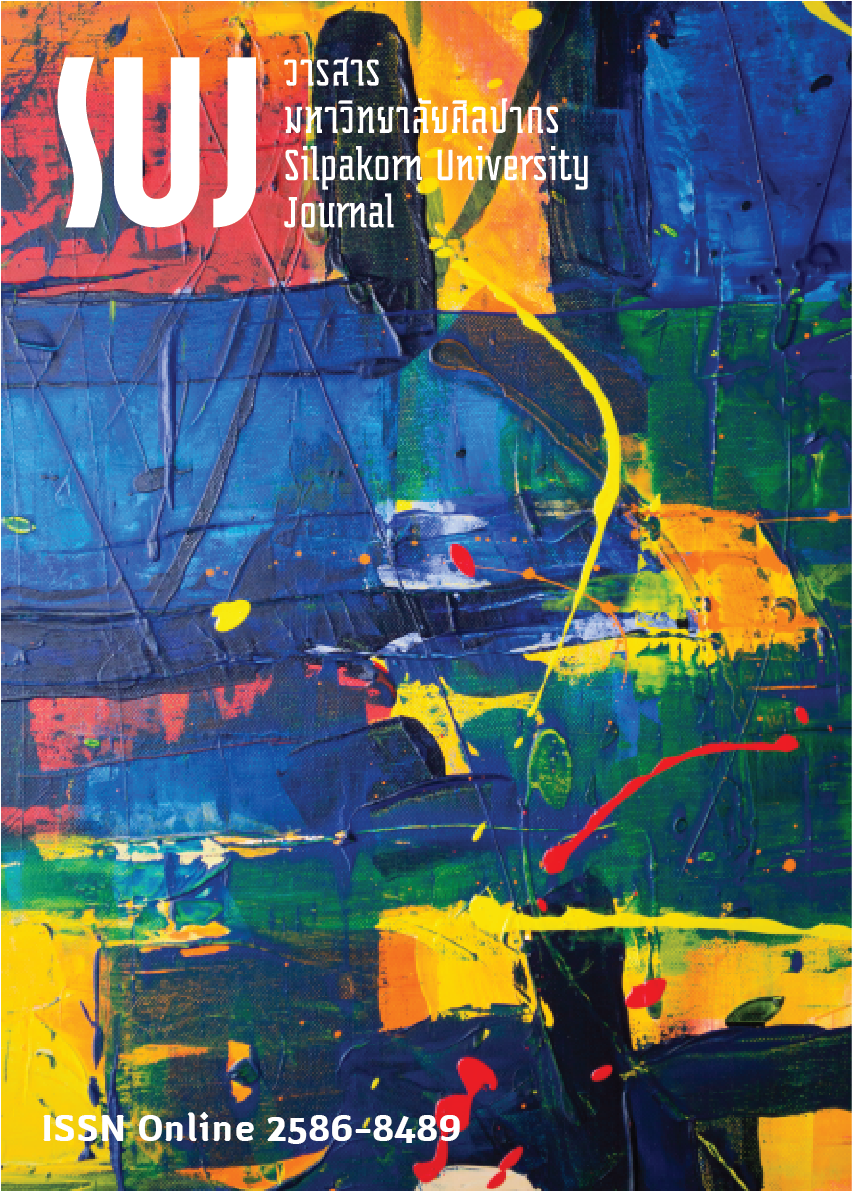รูปแบบและแนวทางการจัดการศึกษาระดับอุดมศึกษาสาขาการท่องเที่ยวเพื่อผลิตกำลังคนที่มีคุณภาพตรงตามความต้องการของตลาดแรงงานและรองรับการพัฒนาประเทศ (Model and higher education management programing in tourism for the production of qualified recourses in accordance with the labor market needs and national development)
Main Article Content
Abstract
การวิจัยเชิงนโยบายนี้ มีวัตถุประสงค์เพื่อ 1) ฉายภาพให้เห็นความต้องการกำลังคนและแนวโน้มใน 5-10 ปีข้างหน้า 2) นำเสนอสัดส่วนการผลิตและอัตราการมีงานทำของบัณฑิต 3) นำเสนอบทบาทของรัฐในการสนับสนุน และ 4) นำเสนอรูปแบบและแนวทางการพัฒนาการจัดการศึกษาระดับอุดมศึกษาสาขาการท่องเที่ยวของสถาบันอุดมศึกษาเอกชนและของรัฐ ข้อมูลที่ใช้ ประกอบด้วย 1) ข้อมูลเชิงคุณภาพ รวบรวมจากผู้บริหาร/ผู้แทนสาขาการท่องเที่ยวในสถาบันอุดมศึกษาเอกชนและของรัฐ 9 คน ผู้บริหาร/ผู้แทนอุตสาหกรรมการท่องเที่ยว 2 คน และผู้เชี่ยวชาญ/ผู้กำหนดนโยบาย 4 คน โดยใช้แบบสัมภาษณ์กึ่งมีโครงสร้าง วิเคราะห์โดยการวิเคราะห์เนื้อหา และ 2) ข้อมูลเชิงปริมาณ รวบรวมจากตัวอย่างที่เป็นผู้บริหาร/ผู้แทนสาขาการท่องเที่ยวในสถาบันอุดมศึกษาเอกชนและของรัฐ 87 คน และผู้บริหาร/ผู้แทนอุตสาหกรรมการท่องเที่ยว 204 คน โดยใช้แบบสอบถาม วิเคราะห์โดยใช้ค่าเฉลี่ย และค่าความเบี่ยงเบนมาตรฐาน ผลการวิจัย พบว่า 1) ส่วนใหญ่อุตสาหกรรมการท่องเที่ยว มีความต้องการบุคลากรสาขาการท่องเที่ยวเพิ่มขึ้นใน 5-10 ปี ข้างหน้า (พ.ศ. 2560 - 2569) โดยเฉพาะผู้มีความสามารถด้านวิชาชีพการท่องเที่ยว การแก้ปัญหา การใช้ภาษาอังกฤษ/ภาษาอื่นๆ การใช้คอมพิวเตอร์ และมีใจรักงานบริการ 2) บัณฑิตที่สำเร็จการศึกษาในปีการศึกษา 2553 - 2557 เพิ่มขึ้นและลดลงแตกต่างกันในแต่ละสถาบัน และร้อยละการมีงานทำในปีการศึกษา 2554 - 2558 อยู่ระหว่าง 20 - 100 3) รัฐควรมีแผนผลิตบัณฑิตเพื่อให้สถาบันอุดมศึกษานำไปเป็นแนวทางในการผลิตให้ตรงตามความต้องการ และรองรับตลาดแรงงานที่มีแนวโน้มสูงขึ้นใน 5-10 ปีข้างหน้า รวมทั้งสนับสนุนการบริหารจัดการ งบประมาณ และการพัฒนาบุคลากร และ 4) รูปแบบและแนวทางการพัฒนาการจัดการศึกษามี 2 องค์ประกอบ คือ 4.1) บทบาทของรัฐครอบคลุมการบริหารจัดการ งบประมาณ และการพัฒนาบุคลากร และ 4.2) บทบาทของสถาบันอุดมศึกษาครอบคลุมการบริหารวิชาการ การบริหารทั่วไป งบประมาณสนับสนุนอาจารย์ บุคลากร และนักศึกษา และการพัฒนาอาจารย์และบุคลากร
This policy research was aimed to: 1) identify manpower needs and trends in the next 5-10 years, 2) present the production and employment rate of university graduates, 3) propose the government’s supporting role, and 4) propose a model and guideline for developing the management of tourism programs of both public and private higher education institutions. Data were drawn from 2 sources. The qualitative data were collected from 3 key informant groups- 9 executives/ representatives of the selected institutions, 2 representatives of the tourism industry, and 4 selected experts and policy makers in the area.Semi-structured interview and content analysis were used for data analysis. Questionnaire was used to collect quantitative data from 87 representatives of institutions offering the tourism program, and 204 representatives of the tourism industry. Mean and standard deviation were calculated for the analysis of the quantitative data. Findings were as follows. 1) The majority of the tourism industry was increasingly in need of tourism personnel within the next 5-10 years (2017 - 2021), especially those who were competent in tourism profession, capable of problem-solving ability, proficient in English and other languages, computer literate, and service-minded. 2) The number of graduates during 2010 - 2014 varied among institutions. The employment rate during 2011 - 2015 academic years ranged from 20 to 100%. 3) The government should formulate a 5-10 years (2017-2026) production plan, including managerial, financial and personnel supports. 4) A resulting model and appropriate guidelines for management of tourism program in higher education comprised 2 components. 4.1 The government roles encompassed management, budget and personnel development. 4.2 The higher education institutions’ roles encompassed academic management, general management, budget support for instructors, staff, and students and professional development for instructors and staff.
Article Details
References
Department of Tourism. (2015). A report on inbound tourist status and record of Thailand in 2015 (รายงานสถานการณ์และสถิตินักท่องเที่ยวชาวต่างชาติที่มาท่องเที่ยวในประเทศไทย ปี พ.ศ. 2558). Bangkok: A Report of the Record and Tourism Economic Section of the Department if Tourism, Ministry of Tourism and Sports.
Deputy Minister of Education. (2017). The policy of the office of the higher education commission (นโยบายสำนักงานคณะกรรมการอุดมศึกษา). [Online]. Retrieved January 5, 2017 from https://www.moe.go.th/moe/th/news/ detail.php?NewsID=50456&Key=news_Teerakiat
George, D., & Mallery, P. (2010). SPSS for windows step by step: A simple guide and reference, 17.0 update (10th ed.). Boston, MA: Allyn & Bacon.
Maitreesophon, Bampen., Veranawin, Luyong., & Unaromlert, Thirasak. (2012). Manpower development strategies of the tourism industry in the western region towards the ASEAN community (ยุทธศาสตร์การพัฒนากำลังคนกลุ่มอุตสาหกรรมการท่องเที่ยวในเขตภูมิภาคตะวันตกเพื่อการก้าวสู่ประชาคมอาเซียน). Stamford Journal. 5(1): 77-88.
Ministry of Tourism & Sports. (2015). Thailand tourism strategy 2015 - 2017 (ยุทธศาสตร์การท่องเที่ยวไทย พ.ศ. 2558-2560). Bangkok: Ministry of Tourism & Sports.
Nangklaphivat, Yuphawan. (2014). Preparation of Thai labor in tourism industry for the ASEAN economic community integration (การเตรียมความพร้อมแรงงานด้านการท่องเที่ยวของไทยเพื่อรองรับการเข้าสู่ประชาคมเศรษฐกิจอาเซียน). APHEIT Journals. 20(2): 158-169.
Office of Small and Medium Enterprise Promotion. (2014). A status report on the small and medium enterprise promotion in 2014 (รายงานสถานการณ์วิสาหกิจขนาดกลางและขนาดย่อม ปี 2557). Bangkok: Data and Research Division.
Office of the Higher Education Commission. (2007). A framework on the 15-year, long-term plan of higher education vol.2 (2008-2012) (กรอบแผนอุดมศึกษาระยะยาว 15 ปีฉบับที่ 2 (พ.ศ. 2551-2565)). Bangkok: Ministry of Education.
Office of the Higher Education Commission. (2013). Higher education commission (สารสนเทศอุดมศึกษา). [Online]. Retrieved Nov 12, 2516 from https://www.info.mua.go.th/information/
Polsaram, Pansak., Devahastin Na Ayudhya, Wallapa., & Sriphetluang, Tippayarat. (2000). The development of learning process at the bachelor’s degree level (การพัฒนากระบวนการเรียนรู้ในระดับปริญญาตรี). Bangkok: Aroonprinting.
Rittirong, Jongjit & Tadee, Reena. (2015). Challenges in producing Thai skilled labor for AEC job market (ข้อท้าทายในการผลิตแรงงานฝีมือไทยเพื่อเข้าสู่ตลาดแรงงานประชาคมเศรษฐกิจอาเซียน). [Online]. Retrieved Feb 28, 2517 from https://www.ms.ipsr.mahidol.ac.th/ConferenceXI/Download/Book/447-IPSR-Conference-A09-fulltext.pdf
Rovinelli, R. J., & Hambleton, R. K. (1977). On the use of content specialists in the assessment of criterion-referenced test item validity. Dutch Journal of Educational Research. 2: 49-60.
Singsi, Kultida. (2014). Thailand’s higher education in Asian community: Modes of learning, trends and future adaptation (อุดมศึกษาไทยอาเซียน รูปแบบ แนวโน้ม และทิศทางการปรับตัวในอนาคต). Lampang Rajabhat University Journal. 2(2): 13-23.
Tunyawasinphong, Suwanna. (2014). Road map of Thai Tourism: In preparation for ASEAN free labor market (แนวทางวิชาชีพท่องเที่ยวไทยเตรียมพร้อมสู่เสรีแรงงานอาเซียน). Bangkok: Thailand Development Research Institute.
Yeampeth, Nichanan. (2014). Thailand tourism in ASEAN and its direction after the opening of AEC (การท่องเที่ยวไทยในอาเซียน และทิศทางหลังเปิด AEC). Bangkok: Tourism Authority of Thailand.
Yurarach, Subin. (2013). The quality development of Thai graduates’ to ASEAN (การพัฒนาคุณภาพบัณฑิตไทยสู่อาเซียน). Journal of Education Naresuan University. 15(4): 142-153.

